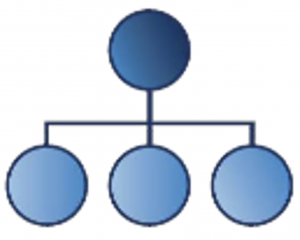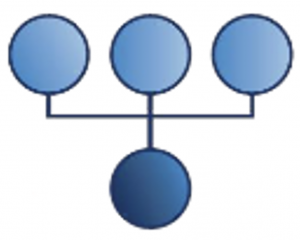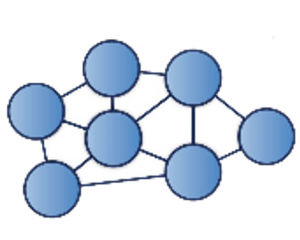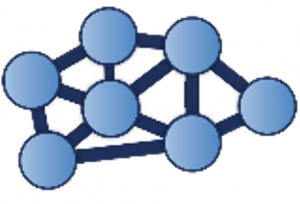Have you ever been or have you ever been around a leader who had a domineering leadership style? If so, you were (or are) seeing someone who likes to be in complete control of the whole organization which can lead to distress, anxiety, and anger. It can cause such people to hurt those they lead.
Have you ever been around a leader like the one I just described who had a change of heart that resulted in a change in their leadership style? Sometimes, people like this have a change of heart and revert to a gentle and kind style of leadership. When that happens, their organizations often are not as effective or productive as they were under their dominant style of leadership. Then, as a result, they revert again to their old style to get things back under control. Once things are under control, they return to being gentle and kind until they go back still again to being controlling.
What I have described above is what I call a schizophrenic leadership style. Leaders who aren’t balanced in their approach tend to hurt their people, which hurts the organizations they lead. Let’s explore the different organizational models in a little more detail to see what they look like.
The Visionary Model: Leader Casts Vision
Most leaders default to either one of two models. The first is sometimes referred to as the top-down or command-and-control model. It’s the one that says everything must go through the leader I do not want to throw this model out. I want to rename it and call it the visionary model because the vision for the organization comes down from the strong leader.

The Servant Leadership Model: Serve, Teach, Train, and Equip
The second one is the servant leadership model. Here’s where the leader serves, teaches, trains, and equips. This one often doesn’t work very well, either, because it’s often dysfunctional. People may get along for a period of time. However, challenges eventually come and are often not dealt with properly because many servant leadership models have little to no accountability with their staff or volunteers. Dysfunction sets in as conflict arises, and the organization becomes unproductive.
The Functional Responsibility Model: Delegate and Empower
If we combine the best aspects of both the visionary model and the servant leadership model, I call this the functional responsibility model. Here, delegation and empowering are happening. In this model, the CEO is still the CEO. The department manager is still the department manager. The mom and dad are still the mom and dad. The church pastor is still the pastor. The coach is still the coach. The classroom teacher is still the teacher. They’re trying to gain consensus through this model, but if they can’t, they’re still responsible for making the decisions. The roles and responsibilities remain clear, but they’re connected through relationship. In the diagram below, the skinnier and the longer the line, the less of a relationship there is among the parties. The closer and fatter the line, the closer the relationship.
The Relactional Model: Empower and Let Go
The functional responsibility model develops into a fourth model I call the relactional model. Now, people are empowered and let go to do their job. In this model, the relationships and the transactions are both strong and healthy, and the organization becomes relactional. The people who emphasize the transactions and those who emphasize the relationships form relactional approaches to both the transactions and the relationships in the organization. The transactional approach by those who most value transactions in the organization because they want to get the job done and the relational approach by those who value the relationships in the organization the most start coming together. This model requires that the relationships are healthy and that people understand their roles and have the ability to fulfill them. When this happens, the sales department wants to work alongside the manufacturing department. In these organizations, areas in conflict now work together because they have strong relationships with each other. They realize the organization will be much stronger when they are working together than in a top-down or bottom-up approach. Now the lines between the circles of responsibility are much fatter because they are stronger.
The Continuous Improvement Model: Evaluate
If we stay in the relactional model long enough, those circles representing departments and functions will begin to intersect and overlap one another because the lines between them have disappeared. Now, healthy evaluation is possible to determine effectiveness and productivity. When this happens, the people start caring as much about the other departments and their success as they do their own. They start communicating, and when they communicate and start caring about one another, the relactional model develops into a continuous improvement model. Now, everyone is looking forward and actively participating in growing the organization instead of always looking backward.
Growing from One Model to the Next
As we cast vision, serve, teach, train, equip, empower, let go, and evaluate (V.S.T.T.E.E.L.E.), we are helping our organization grow and advance through these models. The stress levels will drop. The team will be functioning together far better than they would if they were being yelled at or neglected. In this model, people are held accountable. Job descriptions are clear. Everybody is moving forward together.
Here’s a little of what these organizational models would look like through the lens of the sales and production departments of a business. Let’s start with the command-and-control model. The boss has dictated the price and the delivery date. The salesman goes out and presents the price and terms to the customer, but the customer says he needs it at a lower price. The salesman returns to his boss with the customer’s feedback. The boss says the salesman can sell it for less and that he can sell it with a faster delivery time. The order proceeds to the production department. They look at their schedule and say there is no way they can deliver on time. Now, a fight starts because of the constant tension between sales and operations about the delivery time and price, and the boss makes a decree about the issue.
What would this look like in the servant leadership model? The salesman wants to make a sale, so he sells at a price that is too low and at a delivery time that is too fast. The boss doesn’t hold him accountable. When the production department receives the order, they say they don’t have to meet that delivery time, that that’s not a big deal, and they’ll just work it into the schedule whenever they can. Boom! Conflict arises, and the order is not delivered on time.
What would this look like in the functional responsibility model? They would start to realize that the problem is they’re not getting along very well and that they don’t have clarity concerning their roles. Now that relationships and effective communication are being developed, they will begin to discuss who has the ultimate authority for setting the price and the delivery date. Some of the same mistakes will be made, but they will be fewer and farther between.
How about the relactional model? The team starts to realize they have to communicate with one another to make the organization function well, and they want to communicate because their relationships are stronger. They have confidence in knowing everyone is in the right place and the right role. They trust that everyone is doing what’s best for the organization. Apologies are made when communication breakdowns happen, and the team members take responsibility for and learn from their mistakes.
The relactional model then flows into the continuous improvement model. Now, meetings are happening before sales calls are made and before the production schedule is finalized. Decisions are made together. When there are unresolved disagreements, the CEO steps in and makes the call. As a result of this teamwork, time is saved, sales go up, production gets faster, and the company gains and maintains more clients.
In a nonprofit, the employees and volunteers will be happier and better contributors. On a sports team, the players and coaches will win more games together and have healthier relationships. In a religious organization, the staff will be happier and more productive, and the members will want to participate in more of its services and programs. In a family, the spouses get along better which leads to better relationships and better examples for their kids, and they start performing at higher levels.
As transformational leaders, we know that relactional leadership helps both relationships and transactions function at a high level to move organizations into this continuous improvement model where people are working together toward a common goal and getting the job done.
Ford Taylor is a leadership strategist, keynote speaker, and the author of Relactional Leadership. As the Founder of Transformational Leadership, he is known as a man who can solve complex business issues, with straightforward practical solutions, while maintaining his focus on people.



